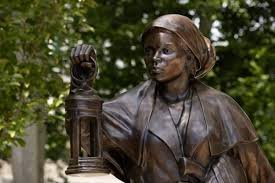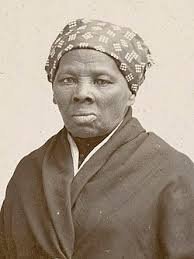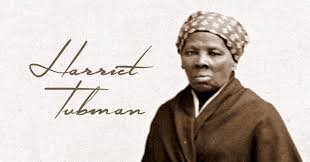Harriet Tubman Early Life in Bondage
Born Araminta “Minty” Ross around 1822 in Maryland, Harriet Tubman entered life as property on the Brodess plantation. By age 5, she was rented out to cruel masters – one traumatizing incident left her with permanent brain damage when an overseer threw a lead weight at another enslaved child but struck her instead. Remarkably, she later described this injury as granting her vivid spiritual visions. At 12, she defiantly blocked a doorway to protect a fleeing enslaved man, suffering a brutal skull fracture. These early horrors forged her iron will. Few know she changed her name to “Harriet” after escaping, honoring her mother, Harriet Greene.
Harriet Tubman The Daring Escape
In 1849, fearing she’d be sold further South (a near-certain death sentence), Tubman fled alone using the North Star as guidance. Her journey through swamps and forests relied on covert networks of free Blacks and Quakers – a perilous 90-mile trek. A rarely shared detail: she initially escaped with two brothers but turned back when they lost nerve, showing her early leadership. Later, she made it to Philadelphia, where she worked as a maid and saved money, but freedom tasted bittersweet: “I was a stranger in a strange land,” she said, thinking of family left behind. This loneliness birthed her resolve to return.

The Underground Railroad’s Most Daring Conductor
Tubman became the only woman to lead the Underground Railroad actively, making 19 perilous trips over a decade and freeing 300+ enslaved people, including her elderly parents. Her tactics were revolutionary: she carried a revolver (famously telling wavering escapees, “You’ll be free or die”), used coded songs like “Go Down Moses,” and timed journeys to Saturday nights (missing Sunday runaway notices). A chilling untold story involves her disguising one fugitive as a corpse in a coffin. Slaveholders posted 40,000bounties(over40,000bounties(over1.5M today), unaware the petite, illiterate woman outsmarting them was a genius of strategy.
Civil War Spy and Military Strategist
During the Civil War, Tubman worked as a Union spy and scout – the first woman to lead an armed expedition. In 1863, she guided the Combahee River Raid, liberating 750+ enslaved people while under gunfire. Declassified military records reveal she used covert knowledge of Confederate supply routes from her Underground Railroad days. Astonishingly, she received no pay or pension for her service until 1899. A little-known fact: she nursed Black soldiers using herbal remedies learned in childhood, saving countless lives from dysentery and smallpox.
The Forgotten Fight for Women’s Suffrage
Post-war, Tubman fought alongside Susan B. Anthony for women’s voting rights, though racism often sidelined her contributions. At suffrage rallies, white organizers asked her to hide her disability (epilepsy from her childhood injury) to appear “strong.” Undeterred, she gave speeches linking Black and women’s liberation: “I suffered enough to believe it.” In her 80s, she donated her home to an elderly Black women’s charity, showing lifelong solidarity. Sadly, her 1913 funeral with military honors was overshadowed by a nearby suffrage march – a bittersweet metaphor for her erased legacy.
Harriet Tubman Love and Family Against All Odds
Tubman’s first marriage to free Black man John Tubman ended tragically when he refused to flee North with her and later remarried, believing her dead. In 1869, she married Nelson Davis, a 22-years-younger Civil War veteran. Their adopted daughter Gertie was central to her life. A touching untold story: Tubman would sing lullabies from slavery days to neighborhood children in Auburn, NY, preserving oral history. Despite poverty, her home always had food for the needy – she’d say, “I can always make room for one more.”
Financial Struggles and the $20 Bill Snub
Despite her heroism, Tubman died penniless in 1913, having donated most earnings to abolitionist causes. She battled the government for 34 years to receive her 25/monthnurse’spension.The2016proposaltofeatureheronthe25/monthnurse’spension.The2016proposaltofeatureheronthe20 bill was delayed repeatedly – a controversy few discuss: some historians argue she’d have opposed sharing currency with slaveowner Andrew Jackson. Meanwhile, her 97-cent commemorative stamp in 1978 was the first to honor an African American woman.

Secret Spiritual Visions and Coded Hymns
Tubman’s profound spirituality guided her missions. She attributed near-death premonitions to her childhood head injury, once saving a train of escapees by suddenly diverting paths – later learning slave catchers waited ahead. During rescue trips, she’d sing “Wade in the Water” to signal hiding in rivers, or “Bound for the Promised Land” to confirm safe passage. In her later years, she described seeing “a line of angels” during dangerous moments, a detail rarely included in mainstream accounts.
The Potato Paradox: How She Outsmarted Bloodhounds
One thrilling escape tactic involved using potatoes to confuse tracking dogs. Tubman would rub salt pork on enslaved people’s feet to mask scent, then have them carry potatoes – when dogs picked up the trail, fugitives would drop the potatoes, making hounds circle pointlessly. Another trick: she carried a live chicken to appear as a lone enslaved woman running errands if spotted. These ingenious methods ensured she never lost a single passenger on the Underground Railroad.
Legacy Beyond the Textbooks: Modern Tributes
Tubman’s great-great-grandniece, Dr. Tina Wyatt, preserves her herbal remedies in a digital archive. In 2021, archaeologists discovered the Maryland cabin where she likely spent childhood – its logs hidden under layers of farmland. Contemporary artists like Bisa Butler immortalize her in quilts, while NASA named a Martian mountain range “Tubman Ridges.” Perhaps her most poetic tribute: in Auburn, NY, a statue depicts her stepping forward, leaving shackles broken behind her – a metaphor for a life spent breaking chains, literal and figurative.
Go to main page


